Articles
FAQ PRODUITS
La station LNS répond à un besoin de mesure d’une donnée, liée aux risques naturels, à la gestion de l’eau etc… Elle s’intègre dans un système de mesure qui contient deux éléments structurels :
La LNS a de multiples fonctions : alimenter les capteurs s’ils n’ont pas leur propre alimentation, récupérer leurs données à pas de temps fixe ou variable, les enregistrer, les traiter, les renvoyer vers l’utilisateur…
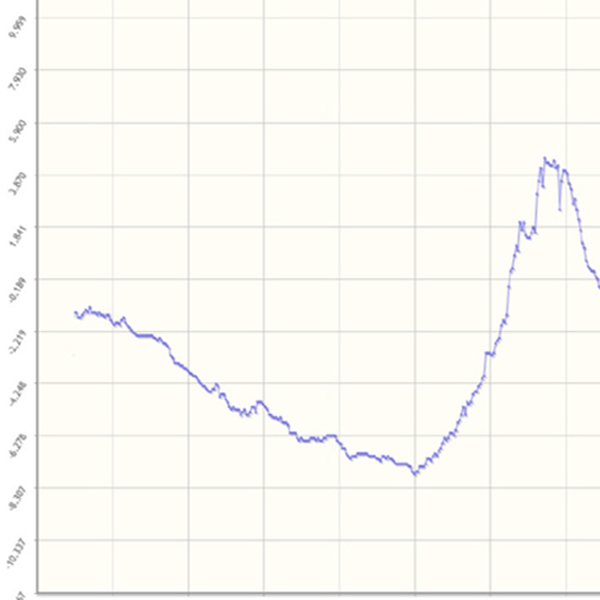
Les traitements possibles via la LNS sont très divers et dépendent du champ d’application : changer les unités, appliquer certaines équations, appliquer une mise à l’échelle…
Dans la mesure de l’eau par exemple, un capteur de niveau d’eau va récupérer la valeur de hauteur d’eau au-dessus de lui. La LNS permettra de référencer cette valeur dans un système géographique nivelé. Elle va récupérer la mesure et la mettre en forme selon les besoins de l’utilisateur.
Une fois qu’elle a acquis et traité la donnée, la LNS peut la transmettre à l’extérieur ou bien la stocker jusqu’à ce que l’utilisateur vienne la récupérer. Elle peut aussi se baser sur cette donnée pour activer des alarmes ou envoyer des alertes, selon des seuils déterminés.
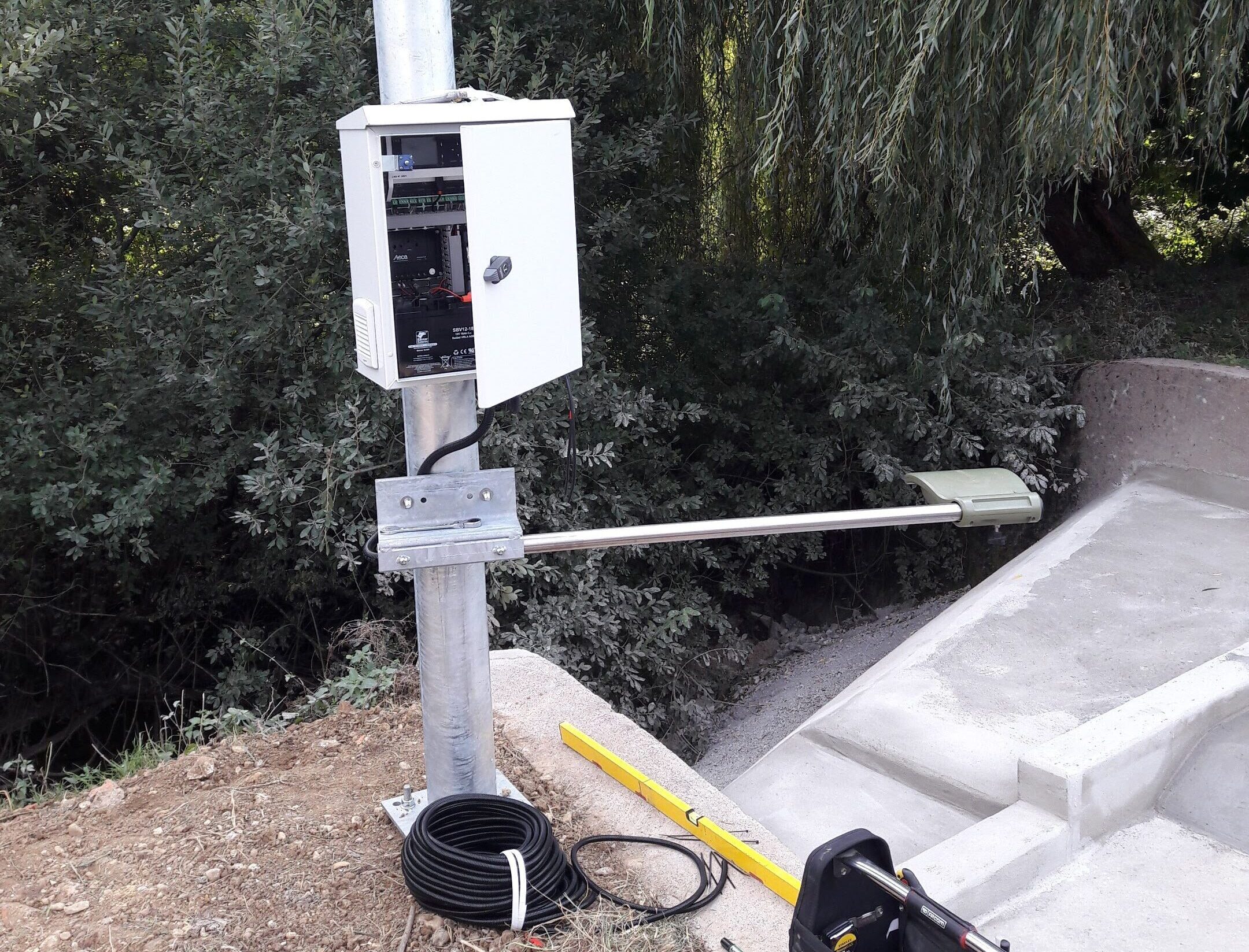
La station d’acquisition LNS a été conçue pour l’enregistrement et la transmission de mesures de niveau d’eau dans le cadre de stations hydrométriques. Elle permet la réalisation de mesures à un pas de temps régulier, notamment pour les réseaux type Vigicrues, des réseaux de suivi des eaux souterraines, etc.
Dans cette application, la LNS vient récupérer le niveau d’eau à pas de temps fixe, l’enregistre, et envoie des alertes en fonction des seuils (en cas d’étiage ou d’inondation par exemple) ; elle peut également produire des chroniques d’évolution du niveau du cours d’eau, de la température, ou encore d’une autre donnée selon les capteurs choisis.
La LNS est également utilisée dans le domaine de la géotechnique : elle permet de suivre des mouvements de terrain, surveiller de potentielles chutes de blocs…
Selon les capteurs qui lui sont raccordés, la LNS peut aussi être utilisées dans le cadre de la mesure de la qualité de l’eau, des matières en suspension dans l’eau… Les applications sont multiples.
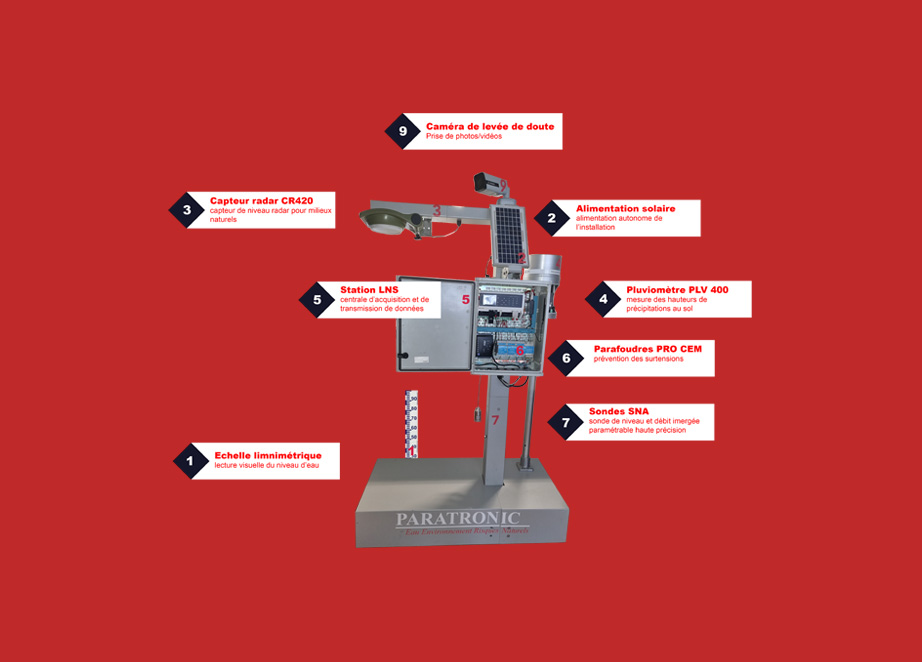
La LNS est une station multi-protocoles, multi-capteurs. Evidemment, elle s’adapte sans difficulté à tous les capteurs PARATRONIC, mais elle peut également s’adapter à l’immense majorité des capteurs sur le marché.
En effet, la LNS utilise des standards ouverts : entrée analogique 4-20mA, des entrées SDI-12, RS485, Modbus, RS232, entrées et sorties logiques…
la LNS est une station multi-protocoles, et c’est également le cas pour sa transmission : en fonction du média choisi (connections filaires, 2G, 3G, 4G, radio, satellite…), la LNS peut employer divers protocoles de transmission. Cela permet de gagner en souplesse selon les réseaux disponibles sur le site, les médias que vous préférez utiliser ou encore des préconisations particulières sur un site sensible où la sécurité est importante.
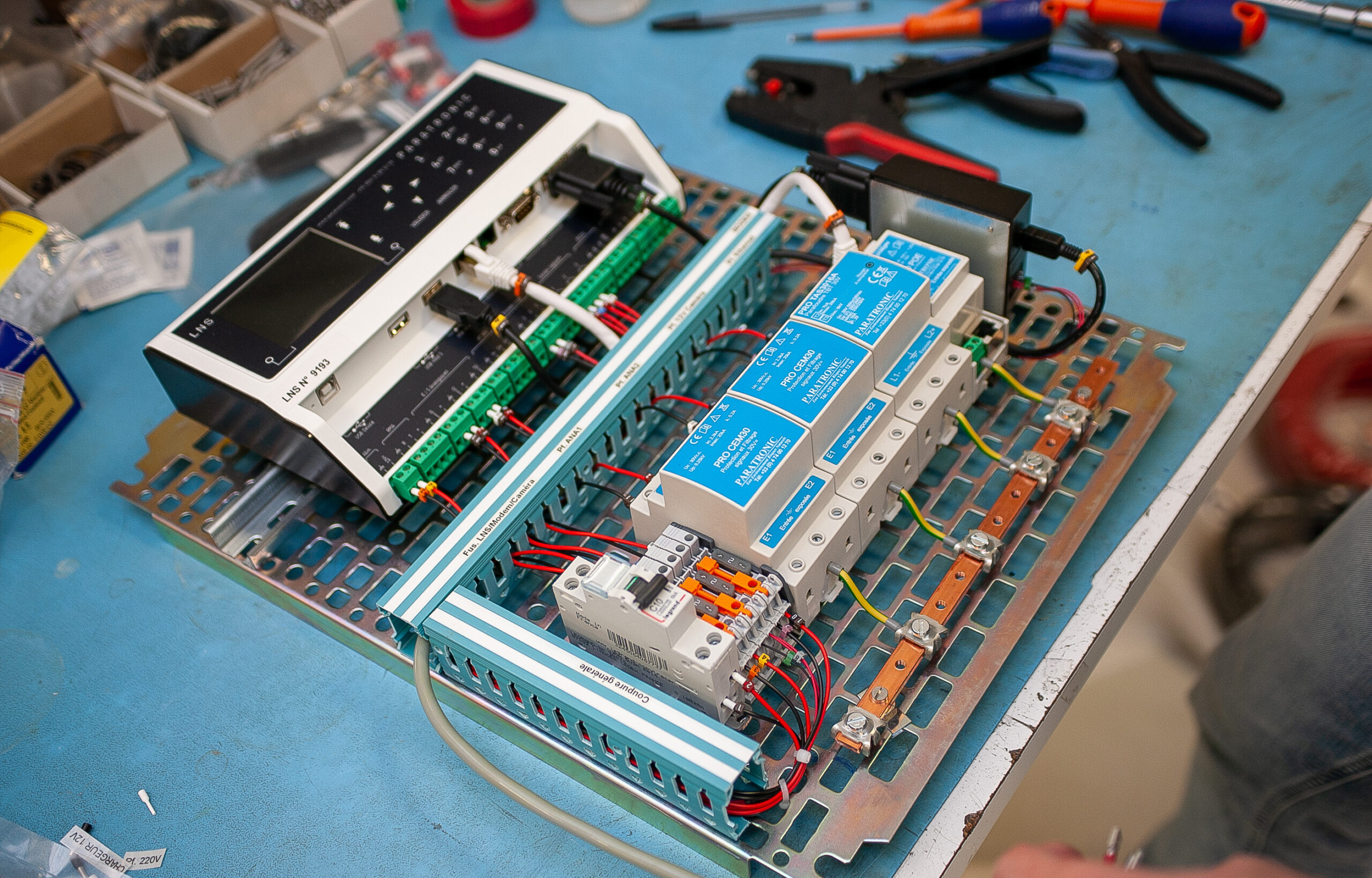
La LNS a une consommation d’énergie assez basse, ce qui lui permet d’être installée dans des zones totalement isolées, où on ne peut pas avoir de raccordement électrique. La station LNS peut fonctionner uniquement sur batterie, ou encore sur panneau solaire.
Cette faible consommation est due à l’électronique embarquée, mais surtout aux multiples possibilités de réglage qui permettent de gérer finement l’alimentation des capteurs, des modems etc… Bref, la LNS permet de n’alimenter le matériel que lorsqu’on en a besoin. En jouant sur la configuration, on peut gérer son énergie parfaitement et réduire sa consommation au minimum nécessaire, ce qui permet d’une part de réduire considérablement sa facture d’énergie et d’autre part d’utiliser son installation dans des endroits isolés.
L’installation de la LNS dépend surtout du type d’application. En général, la LNS est une station d’acquisition qui se présente sous la forme d’un coffret « prêt à l’emploi ». Ce coffret électrique peut être monté sur rails.
Une fois la station installée, on va câbler chacun des capteurs sur son entrée dédiée : analogique, numérique ou logique. Pour ce qui est de l’alimentation, la station peut être fournie seule, ou intégrée dans une des 3 versions différentes du coffret, en fonction de l’alimentation électrique :
– un coffret autonome avec une batterie 12V,
– un coffret avec panneau solaire : régulateur solaire et panneau photovoltaïque,
– un coffret avec une de nos alimentations AS2A raccordées au réseau 220V.
Selon le type de modem de communication choisi, il peut se raccorder sur un port série, sur une prise USB…
La LNS ne requiert pas de maintenance particulière, à l’exception de potentielles mises à jour. Généralement, ces mises à jour ne sont pas indispensables, et servent essentiellement à l’ajout de nouvelles fonctionnalités pour répondre à une évolution de vos besoins.
Il peut aussi y avoir de légères maintenances non liées à la station : par exemple, dans le cas d’une station hydrologique il faudra peut-être recaler le capteur de temps à autres.
Si vous n’avez pas configuré de transmission, il faudra aussi venir de temps en temps brancher un ordinateur portable à la station LNS pour récupérer les données. Connecter un ordinateur à la LNS permet également de modifier la configuration, mais si vous souhaitez seulement récupérer les données vous pouvez tout simplement brancher une clef USB dans le port prévu à cet effet. La station est munie d’un écran LCD et d’un clavier qui permettent de naviguer dans les menus, d’afficher certaines données et également d’enregistrer les données sur les clefs USB branchées par exemple.
Il est également possible de brancher une clef WiFi à la station pour pouvoir s’y connecter un peu à distance, notamment sur un site légèrement difficile d’accès.
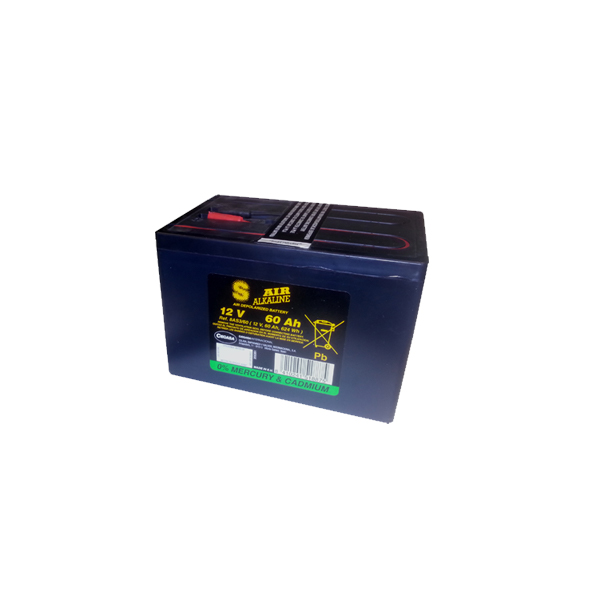
En fonction de votre installation, l’autonomie énergétique de votre LNS va beaucoup varier, selon divers critères :
Selon l’application, votre station d’acquisition LNS peut ne pas être en autonomie totale, particulièrement si votre application nécessite une haute fréquence de transmission des données.
L’application la plus courante est une station de mesure de niveau d’eau prise par radar. Avec une transmission tous les quarts d’heure et une batterie 12V à 40 Ah, la station peut fonctionner en autonomie pendant plusieurs mois (en incluant l’envoi d’alertes et les transmissions régulières par GPRS).
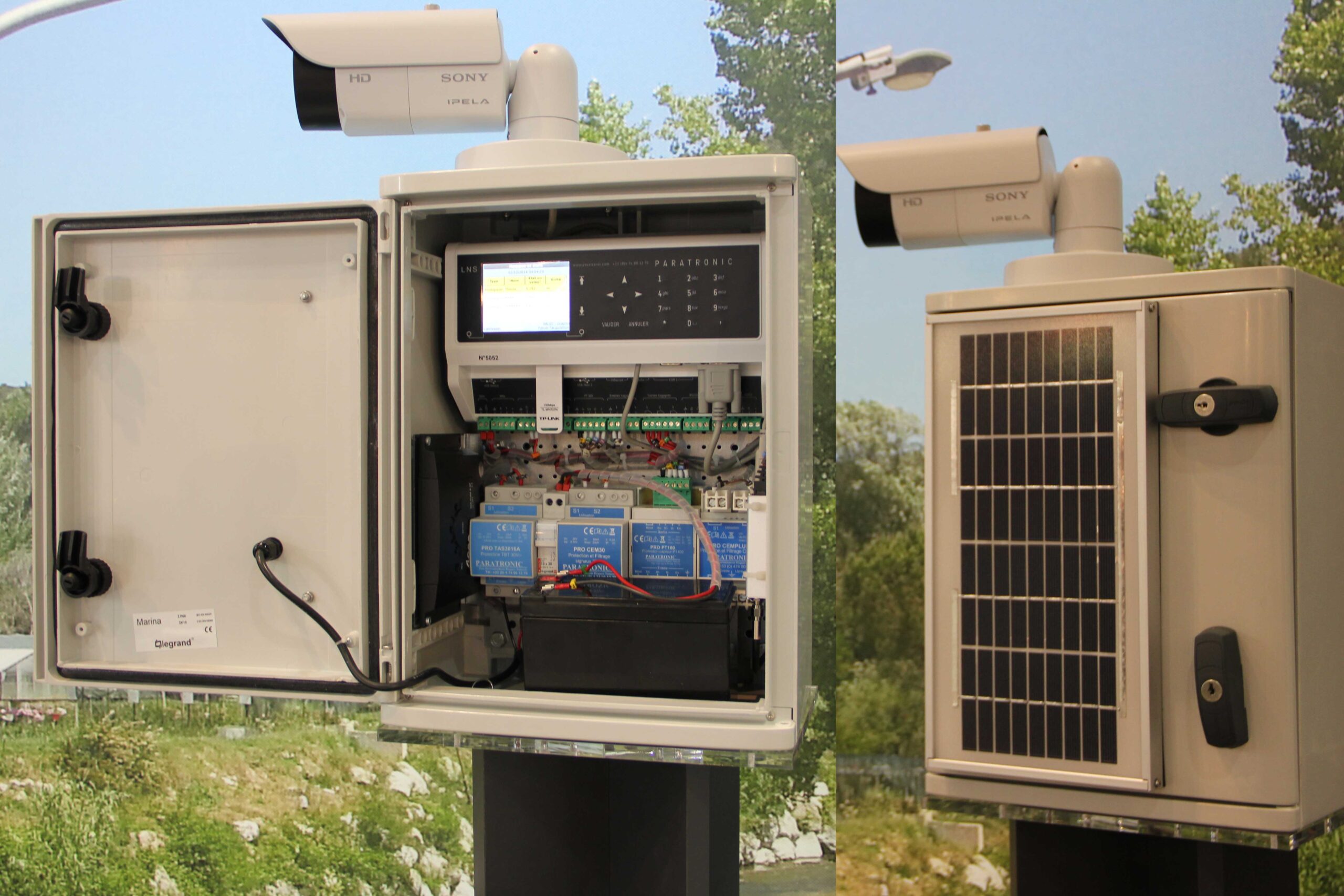
La LNS peut vous transmettre une quantité gigantesque d’informations : son paramétrage étant virtuellement infini, les possibilités sont multiples.
Les données transmises dépendent des capteurs branchés à votre installation. La LNS peut notamment vous transmettre :
Notre équipe commerciale est à votre disposition pour vous conseiller sur le terrain, vous donner les applications possibles afin que vous puissiez traiter les données les plus adaptées à votre besoin. Si vous le souhaitez, nos commerciaux peuvent effectuer une visite préalable du site pour s’informer sur le type de mesure à effectuer, le pas de temps etc. afin de vous préconiser un type d’alimentation et dimensionner une batterie ou un panneau solaire selon vos besoins. Ils peuvent aussi, si nécessaire, intervenir sur le paramétrage de la LNS et vous conseiller sur de potentielles programmations plus poussées.
La plupart du temps, la LNS est utilisée pour transmettre les données des capteurs vers l’extérieur ; elles sont généralement dirigées vers un superviseur (notre superviseur web ou un superviseur hébergé par le client). Ainsi, les données vont arriver sur le serveur à pas de temps fixe pour y être bancarisées. Cette bancarisation va permettre l’élaboration de statistiques, mais aussi la visualisation en temps réel des données (l’état d’un cours d’eau, la pluviométrie d’un site…), dans le cadre d’un système d’alerte notamment.
En plus d’être utilisables avec tous les capteurs PARATRONIC, elle est également compatible avec de nombreux produits tels que des caméras IP ou des webcams. Cela permet de réaliser des prises de vue à pas de temps régulier ou selon des conditions particulières : par exemple, si la rivière atteint un certain niveau, vous souhaiterez peut-être réaliser des prises de vue à intervalle plus court afin de lever le doute. Une caméra permet d’obtenir une image sans forcément avoir à se déplacer sur le site, qui peut s’avérer dangereux dans le cadre d’évènements de risques naturels.
La LNS peut être utilisée dans tous les domaines de risques naturels dans lesquels PARATRONIC intervient.
La LNS possède d’innombrables possibilités de programmation, de nombreux protocoles, et peut être connectée à divers capteurs. Si cela en fait la station d’acquisition idéale pour certaines applications, il est possible qu’elle soit surdimensionnée pour d’autres projets.
Par exemple, si vous souhaitez mesurer un niveau d’eau ou une température à pas de temps donné et la transmettre, sans effectuer de traitement particulier de la donnée, opter pour un data-logger LHC sera sans doute plus pertinent pour vous. Votre potentiel d’action sera alors plus limité, mais le coût sera moindre et vous bénéficierez d’une meilleure autonomie.
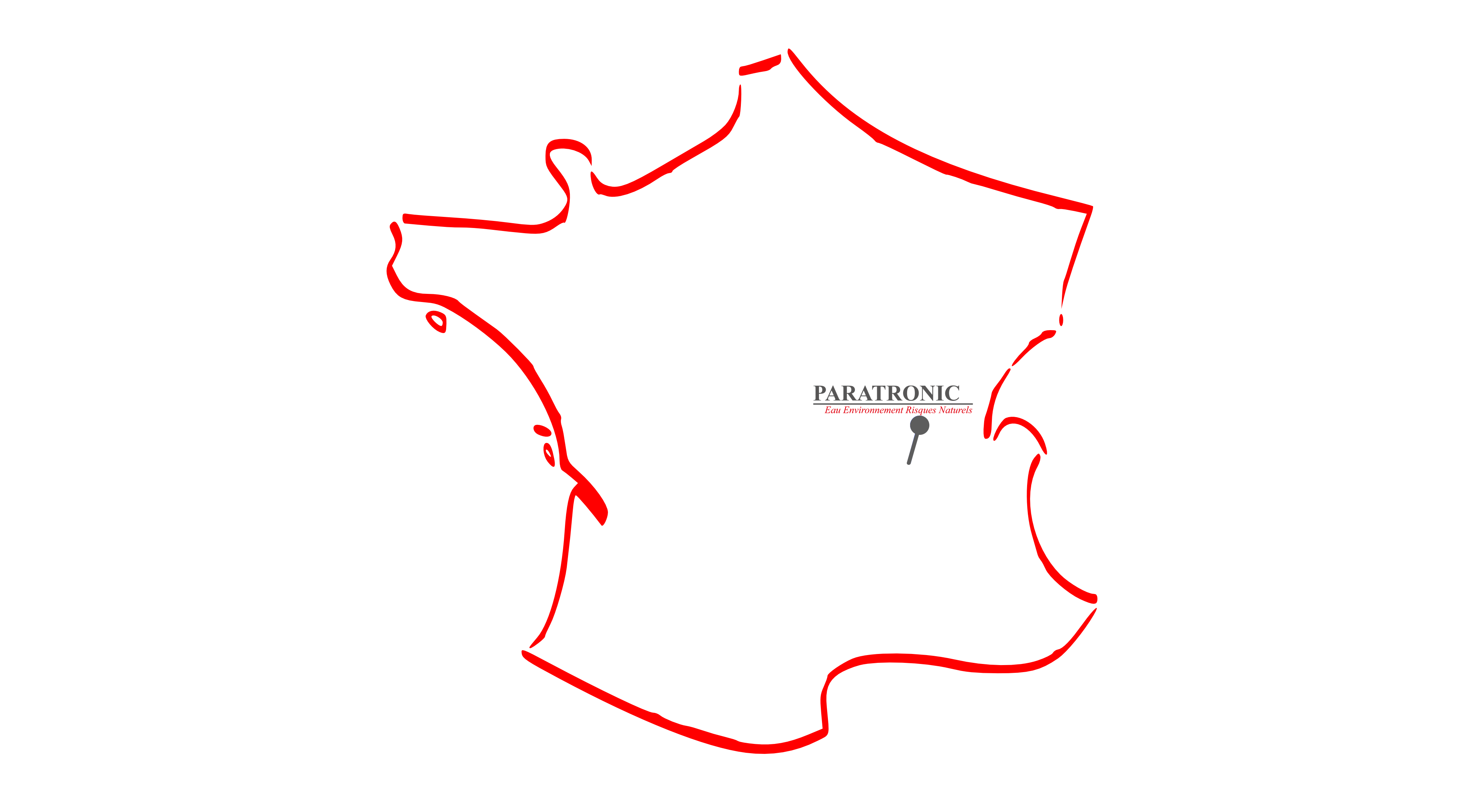
La LNS a été développé par notre bureau d’étude et est fabriquée en France, dans notre usine de Reyrieux.
Notre FAQ n’a pas répondu à toutes vos questions ? N’hésitez pas à nous contacter pour plus d’informations.